877-929-7665
Table of Contents
Introduction
1. Pool Type
2. Geographic Region
3. Pool Size
4. Installation Costs and Timing
5. Site Conditions
6. Pool Patio
7. Pool Options and Accessories
Introduction
How much does an inground swimming pool cost?
After the initial buzz of dreaming and designing your inground pool in your mind’s eye, you will likely want the answer to the most commonly asked question, “How much does an inground pool cost?” If you turn this into an online research project, you’ll see there is a ton of information out there, and one quick takeaway will be this: the cost range for an inground pool is wide.
Much like other big-ticket items you purchase such as a car or home, many factors affect pricing. There are options, levels of trim, insurance, preparation and so forth to consider. That said, an inground pool can range from $45,000 for a basic, vinyl inground installation and equipment package, to over $100,000 for a custom gunite (concrete) inground pool.
As you research, you may find surprising new options become factors in your decision-making. Perhaps you’ll become newly enamored with the idea of a tanning ledge or a beach entry or perhaps some water features. As you dream and plan, it’s best to connect with a pool builder near you for a home visit and estimate.
At that point, you can plan your pool installation with a budget in mind, explore financing options, and plan out a timeline. As you consider these factors, here are some general guidelines that will help you through the process.
What's the Best Time of Year to Buy a New Inground Fiberglass Pool?
Read More1. Pool Type
There are basically three types of inground swimming pools you can choose from: vinyl liner pools, fiberglass pools and gunite (concrete) pools. For basic inground and installed packages, a vinyl pool will run between $45,000 to $65,000; a fiberglass pool package will run $40,000-$60,000, and concrete pools will run $50,000 and up. The exception is in sunbelt states like California, Florida, and Texas where concrete pools can cost substantially less. The lifetime cost of ownership depends on an array of factors. We produced this helpful chart to guide new pool owners on lifetime maintenance considerations.
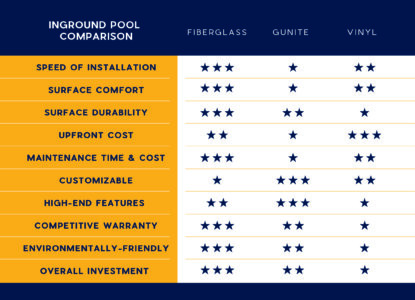
Vinyl liners are the lowest in initial cost. However, they have long-term upkeep and repair costs associated with them. In addition to regular annual maintenance costs, the average replacement cost of vinyl runs from $3,500-$5,000. On average, vinyl liners must be replaced every 7 to 9 years (and sometimes sooner if your water is not constantly chemically balanced). In addition, vinyl liner pools will typically not add to your home’s resale value. Fiberglass pools cost a little more at the outset, but based on the maintenance and replacement costs of vinyl, fiberglass pools win out in the lifetime cost equation. Gunite pools, typically, the most expensive option, allow for broader control of the design and made-to-order options and water features. Maintenance required includes acid wash/replastering approximately every five years and close attention to chemical treatment of algae.
Get all the facts before you buy, A Comprehensive Comparison of Inground Vinyl, Gunite, & Fiberglass Pools
Download eBook2. Geographic Region
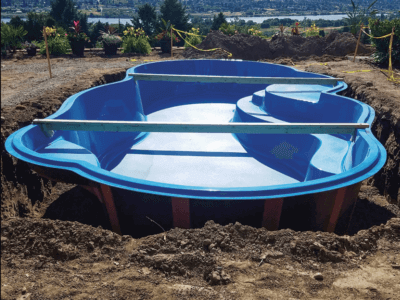
Pool costs vary by market and geographic region. Does your area have a freeze/thaw cycle? If so, keep in mind that a gunite pool may cost more due to extra materials required. Of course, proximity to labor markets and materials can also influence the cost of inground pool delivery and installation.
Best Warranty
Check Out Our Warranty3. Pool Size
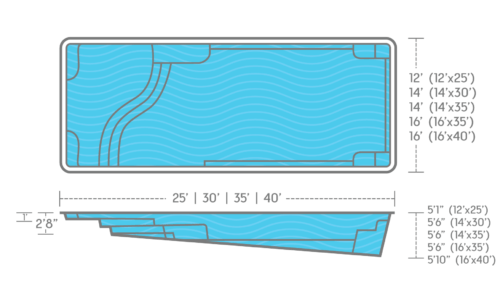
The cost of your inground pool will be directly impacted by its size, design, and style. That makes sense, right? The larger the pool, the more material to purchase, more earth to move, and possibly more equipment required. You’ll also have maintenance costs associated with having more water, whether that’s the water itself, filtration, or chemical costs.
What Size Swimming Pool Can Your Yard Accommodate?
Use Our Pool Selector Tool4. Installation Costs and Timing
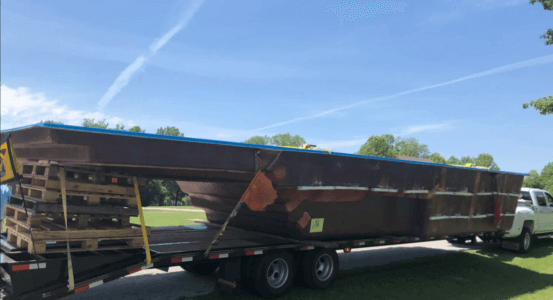
The basics of inground pool installation are straightforward. You have digging, delivery, pool filtration setup, maintenance and cleaning equipment, your first fill, and decking. How your individual pool builder/dealer will handle the particulars of hauling dirt, electrical, and permitting may vary, so if you’re interviewing multiple dealers, it’s good to note these details so you are sure that you are comparing apples to apples.
NOTE: A fiberglass pool typically takes about 3 weeks to install.
How Long Does it Take to Install a Fiberglass Pool?
Learn More5. Site Conditions
Inground pool cost will be impacted by your unique site conditions. An experienced pool builder will insist on evaluating your site prior to providing pricing information. Among the items that will impact your inground pool cost are:
Electrical: Does your existing breaker box have the capacity to accommodate your pool system? Will the pool be at a significant distance from the box?
Septic System: Do you have a septic system? Will fingers need to be re-routed?
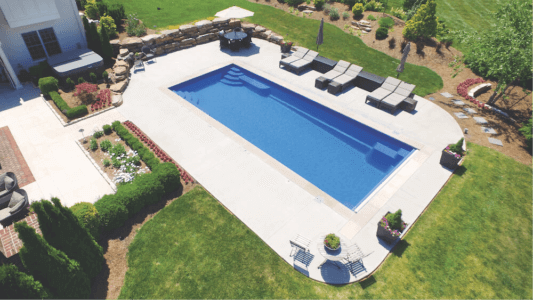 Plumbing: Where do you want your pool equipment? How far will the plumbing lines have to run?
Plumbing: Where do you want your pool equipment? How far will the plumbing lines have to run?
Elevation: What is the change in elevation? Will you need a retaining wall? Can all the dirt stay on-site, or will it need to be hauled away?
Water: How do you plan to fill your pool? If water has to be hauled in, how accessible is your pool area for a tank truck?
Access: Do you have enough room for equipment and concrete trucks to reach the backyard, or is it tight, requiring a pump and shuttle from the street?
Landscape: Will existing trees, shrubbery, decks and/or concrete patios need to be removed or replaced?
Natural Gas/Propane: How far will the gas line have to be run to reach the heater?
How much does a fiberglass pool cost?
Check Out Our Pool Cost Calculator.6. Pool Patio

Your choice of pool patio material is essential to consider in your swimming pool budget and can have an impact on your overall inground pool cost. For example, you can opt for a standard broom-finish concrete pool deck that averages $6.50 per square foot, or you can opt to have a travertine paver patio that runs $16.00 per square foot. For a 1,000 square foot patio, that can mean a variance of nearly $10,000.
The Top Five Things People Love About Tanning Ledges
Read More7. Pool Options and Accessories
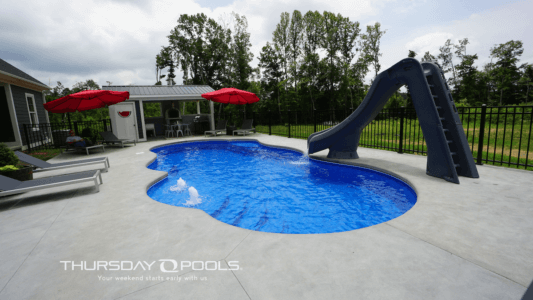 Optional items include an automatic pool cover, safety cover, heater, heat pump, slide, water features, lights, and salt system. These additional options are not necessities for an inground pool and are not likely to be included in a basic inground pool estimate. They can be added, at a cost, or they can be added later if your initial budget is at its limit.
Optional items include an automatic pool cover, safety cover, heater, heat pump, slide, water features, lights, and salt system. These additional options are not necessities for an inground pool and are not likely to be included in a basic inground pool estimate. They can be added, at a cost, or they can be added later if your initial budget is at its limit.
An inground swimming pool is a big investment. This is true whether you purchase a basic pool or choose every option and extra available. Your pool could be the largest purchase you’ll make outside of your home. The best starting point for building your inground pool cost budget is to schedule a site evaluation with a pool builder. Share your thoughts on pool size, design and style, and ask questions. They will answer questions, point you in the direction of additional information you might need, and provide an estimate for your inground pool.
Find the Accessories You Need for Your Pool!
Download eBook
Those are the facts on costs. Is it time to take the plunge?!
Get a free estimate on a new fiberglass pool.
Get An Estimate